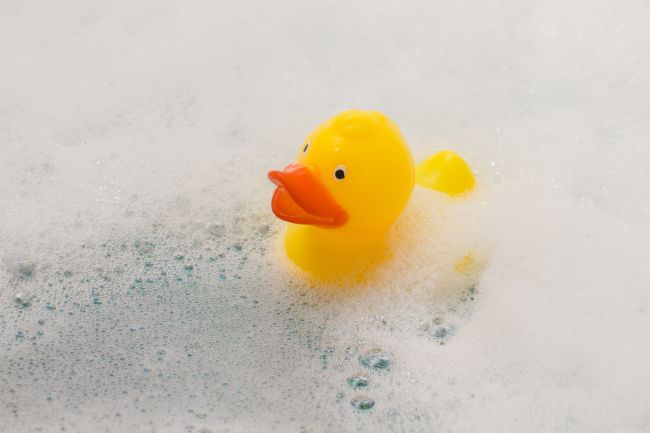7 Daily Activities to Facilitate Communication

The best opportunities for your children to learn language are through daily routines. You can learn how to model language and make a simple routine (e.g. changing a diaper) into a teaching opportunity. It’s easier than you think. Start to model words in your child’s environment. Pausing to encourage repetition is a great first step.
Here are 7 different daily activities that show you how teach your little one new concept words like “up” and “down”:
1. Bedtime
Read the book “Up, Up Down” by Robert Munsch
-
Combine finger play with language. This is an easy book where you can use your fingers/hands to climb “up, up, up” and “fall down” along with your voice climbing up or down with the text. The actions and finger movements are often fun adult-child interactions.
-
After, you read the book a few times, say the line “She went……”, and look with anticipation at your child. They may participate by filling in “up, up” either with their fingers or with words.
2. Getting Dressed and Undressed
Think about how many times a day you dress and undressed your child or even change a diaper. Instead of making this a dreaded task, think of it as more time to model language and engage your child. Here are some target language phrases to teach concepts “up” and “down” when changing your child:
-
“Sit down”
-
“Foot up” – to get sock on/off
-
“Stand up”
-
“Zipper goes up” or “Zipper goes down”
-
You can take turns zipping up and down a zipper on either your coat or the child’s coat. You zip up the coat. Before zipping it down, PAUSE, wait with an excited expression, then model “ZIPPER DOWN”, and do so.
3. Climbing the Stairs
Even a simple routine of climbing the stairs can have you teaching and exploring language with your child.
-
As you climb the stairs say, “Up, up, up” or “down, down, down.”
-
You can pause at the first step and offer a choice, “go up or down?”/
-
You will know if they understand the concept words if the follow direction by pointing or use the concept words.
4. Meal time
While at the dinner table, sing a song. It is a great time to be the child’s eye level for face to face contact. Sing action songs and repetitive rhymes which are great for encouraging communication. Pause at the end of a well-learned song or rhyme, and look with anticipation at your child.
Example: “The itsy bisty spider went …”
5. Getting into the car seat/driving in the car
Think about how many times are you driving to the store, daycare, or to visit family and friends. This is a perfect time to model the concepts up and down.
6. Bath time
Bathing the children and teaching language, now that’s what I call multitasking!
-
During your bath time routine, put toys on the bathtub and say the words, “fall down” as you push the toys in.
-
Keep the mess in the tub! Blowing bubbles is another fun activity to learn language. Blow a bubble and say, “bubbles go “up, up” or “bubbles fall down.”
-
Pause before you blow a bubble, and look with anticipation at your child.
7. Playtime
Here are some more examples of using the concepts up and down while being silly with your children.
-
Farm animals and a barn. You model. “Pig marches “up, “up” “up” the barn, “Fall down”
-
Cars and a car ramp. You model, “Car goes up and car goes down”
-
Lift your child up in the air, say the word “up” over and over again. Lift your child up with your feet or knees while lying with your back in the floor. Repeat the words, “up” and “down”. Pause before you lift your child, and look with anticipation at your child.
Remember it is important that you pause only to the point at which you give the child time to process a communication attempt, not to the point of a power struggle… then MODEL the expected response, and continue the activity.
Once you get the hang of it, change the language concepts and continue to facilitate communication during these and other every day routines.